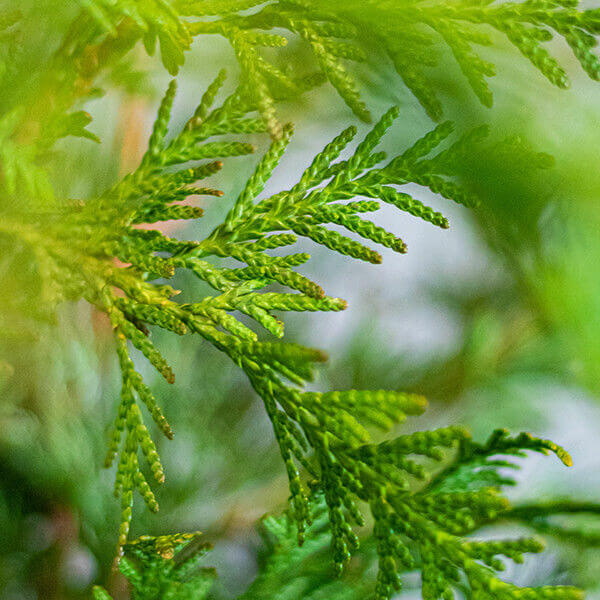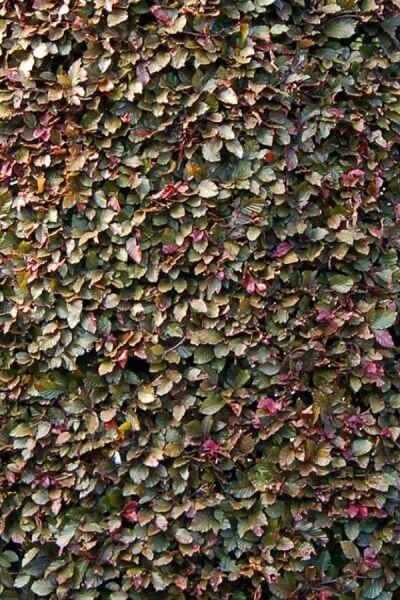Hedge Plants For All-round Interest
Hedge Plants For All-round Interest
Blog Article
Best Hedging Plants For Decorative Hedges
Boost your garden's attraction with lavish hedge ranges such as Yew (Taxus), Thuja, Laurel, Photinia, and Bamboo, celebrated for their structural integrity and environmental benefits.
Yew and Thuja supply evergreen coverage and winter strength, while Laurel uses quick growth and broad, fragrant leaves.
Photinia adds seasonal charm with its dynamic red foliage, and Bamboo provides a low-maintenance, peaceful ambiance.
These hedges enhance air quality, minimize sound, and produce tranquil, personal areas.
Appropriate planting, spacing, and upkeep ensure vigorous growth and eco-friendly harmony.
Explore how these rich ranges can raise your garden's charm and wellness.
Secret Takeaways
Transform Your Garden With Lush Hedge Varieties
- Select Yew for its dense, evergreen development and unequaled longevity.
- Choose Laurel for its quick development and broad leaves, making sure quick privacy.
- Select Photinia for its dynamic seasonal foliage, which turns a striking dark red.
- Use Bamboo for a low-maintenance, winter-hardy hedge with visual appeal.
- Area plants 2-3 per meter and prune frequently for optimal growth and health.
Popular Hedge Plants
When transforming a garden with lush hedge varieties, it's important to think about popular hedge plants such as Yew, Thuja, Laurel, and Photinia due to their special attributes and advantages.
Yew (Taxus) is extremely respected for its durability and thick, green development, making it a prime choice for withstanding landscapes.
Thuja is kept in mind for its evergreen foliage and robust winter durability.
Photinia adds seasonal vibrancy with red leaves that darken with time, creating dynamic visual appeal.
Laurel offers rapid development and aromatic, broad leaves, perfect for fast privacy.
Additionally, Bamboo is an excellent choice for atmosphere, using a low-maintenance, winter-hardy choice that improves the garden's aesthetic with its elegant, swaying walking canes.
These choices deal with a range of horticultural requirements and choices.
Advantages of Garden Hedges
Garden hedges use a plethora of advantages, making them a valuable addition to any landscape. These natural barriers are cost-effective to carry out and provide substantial wind security, enhancing air blood circulation and adding to noise decrease. The dense foliage of hedges like Thuja and Beech ensures personal privacy by obstructing presence, producing a secluded and tranquil environment.
Hedges also play a vital role in microclimate regulation, offering a stable environment that cultivates plant development and reduces temperature level changes. Their intricate leaf structures filter contaminants, enhancing air quality and contributing to a healthier garden community.
Furthermore, hedges master sound reduction, soaking up and deflecting sound waves to lower ambient sound levels. This dual functionality of supplying both acoustic and visual personal privacy improves the total tranquility and visual appeal of any garden.
Planting and Maintenance Tips
For a successful hedge, careful preparation of the planting location is crucial. Guarantee the soil has correct pH and drainage to support strong root development.
Area the plants properly for the chosen species. Water the hedge often throughout its initial development phase, adjusting as needed with seasonal modifications.
Carry out a methodical pest control and illness prevention strategy, using natural or chemical treatments when necessary. Routinely examine for aphids, termites, and fungal infections.
Apply mulch to keep wetness and suppress weeds. Seasonal pruning promotes thick development and air circulation, important for plant health.
Following these guidelines will assist you cultivate a lively, well-kept hedge that enhances the beauty of your garden.
Spacing and Cutting Guidelines
Spacing and Trimming Guidelines
Correct spacing and cutting are crucial for cultivating healthy, visually appealing hedges. Adequate spacing ensures each plant gets enough nutrients, light, and air flow.
Follow these standards for optimum hedge upkeep:
- Spacing: Position hedge plants 2-3 plants per meter to motivate robust development.
- Pruning Strategies: Routine pruning is necessary for keeping wanted hedge height and shape. Cut brand-new development in summer season and cut down older wood throughout winter season.
- Seasonal Care: Change cutting techniques and schedules according to seasonal requirements to guarantee plant health.
- Hedge Height: Regularly monitor and trim to keep the wanted hedge height and attain consistent looks.
Adhering to these actions will guarantee your hedge prospers, enhancing both the appeal and functionality of your garden.
Picking the Right Hedge
Selecting the Right Hedge
Selecting the appropriate hedge includes assessing factors such as mature height, foliage density, and environmental strength. Successful hedge plant choice needs understanding each types' development characteristics and site-specific flexibility.
For example, Yew (Taxus) offers outstanding longevity and thick development, while Thuja is noteworthy for its winter strength. Additionally, considering upkeep requirements is crucial; fast-growing types like Laurel or Privet need routine trimming, whereas low-maintenance choices like Bamboo or Ivy might be more effective for those seeking very little upkeep.
Ecological aspects such as soil type, light availability, and wetness conditions should likewise assist the selection procedure. This careful technique ensures the selected hedges will grow, providing both visual and functional advantages to the garden landscape.
Delivery and Planting Guidance
To ensure your hedge plants thrive, they must be provided by specialized couriers and planted without delay upon arrival.
Follow these important actions for successful planting:
- Soil Preparation: Improve the soil with raw material to improve drain and nutrient material.
- Planting Depth: Develop a trench two times the width and equivalent to the depth of the root ball.
- Watering Techniques: Water thoroughly after planting, keeping the soil regularly wet but not saturated.
- Mulching: Apply a layer of mulch to keep moisture and reduce weeds.
Consumer Support and Service
Given the important function of prompt help in horticultural pursuits, our client support team is offered 6 days a week through telephone, e-mail, and social networks to offer professional recommendations and promptly resolve any issues. Their dedication to quick response times ensures customer complete satisfaction by fixing inquiries associated with plant health, ideal planting techniques, and maintenance schedules.

Reaction Time
-----------------
This comprehensive support group, strengthened by an outstanding 9.3/ 10 client ranking, highlights our dedication to boosting the gardening experience for every client.
Frequently Asked Questions
How Long Does It Take for Hedge Plants to Establish?
Hedge plants typically require one to three years to become fully established, with the exact duration varying by species and growing conditions.
Reliable care during this crucial duration is important for robust growth. Consistent watering, vigilant weed control, and appropriate fertilizer application are pivotal in promoting strong root advancement.
For more info instance, fast-growing types like Laurel might establish faster, while slower-growing ranges such as Yew might take longer. Persistent maintenance speeds up the facility procedure, resulting in healthy and thick hedges.
What Are the Finest Hedge Plants for Privacy?
The question of the finest hedge plants for personal privacy involves assessing evergreen and deciduous choices.
Evergreen hedges like Thuja, Laurel, and Cypress supply year-round coverage, ensuring constant personal privacy.
In contrast, deciduous hedges such as Beech offer seasonal personal privacy, shedding leaves in cooler months.
Key maintenance suggestions for personal privacy hedges include regular cutting, fertilizing in spring, and appropriate spacing-- generally 2 to 3 plants per meter.
Additionally, constant watering and persistent weed removal are vital for promoting healthy, thick growth.
Can Hedge Plants Attract Wildlife to My Garden?
Yes, hedge plants can bring in wildlife to your garden by providing essential advantages like shelter, food, and nesting sites, therefore boosting local biodiversity. For circumstances, yew, holly, and laurel are exceptional for drawing in birds, while ivy supports a range of bugs.
However, it is necessary to note that there are some downsides, such as increased upkeep to manage insects and regular upkeep. Thoroughly selecting and keeping hedge varieties can assist balance these disadvantages and benefits, eventually promoting a vibrant and sustainable environment in your garden.
Are There Any Blooming Hedge Plants Available?
Yes, there are flowering hedge plants readily available that can enhance the appeal of your garden.
For example, Elaeagnus, likewise known as Olive Willow, produces aromatic white flowers in the fall, adding a touch of beauty.
Photinia, another popular option, showcases lively red leaves that mature into a rich green, producing a vibrant visual result throughout the seasons.
To ensure these plants prosper, it's vital to practice correct pruning techniques and seasonal maintenance, such as trimming brand-new development in the summer season and cutting back in the winter.
These measures will help maintain the health and aesthetic appeal of your flowering hedges.
How Do I Prevent Insects in My Hedge Plants?
To prevent insects in hedge plants, utilize natural bug control approaches and keep proper hedge care. Introduce useful bugs like ladybugs, which take advantage of hazardous insects, to produce a well balanced environment.
Frequently check your hedges for indications of invasion and without delay remove any affected parts to avoid the spread. Make sure the health of your hedges by using well balanced fertilizers and offering adequate water.
Utilize mulching to maintain soil wetness and appropriate spacing to decrease plant stress and promote robust growth. These practices jointly assist in lessening insect problems and maintaining a healthy hedge.
Conclusion
In essence, picking the ideal hedge varieties such as Yew, Thuja, and Laurel can transform any garden into a tranquil haven. These plants provide year-round greenery, boost visual appeal, and offer useful advantages like noise reduction and wind defense.
Appropriate planting techniques, precise spacing, constant watering, and seasonal trimming are important for optimal growth.
Reliable shipment services and expert consumer assistance ensure a smooth experience from purchase to planting, making it easier than ever to raise your outdoor space.
Garden hedges use a plethora of benefits, making them a valuable addition to any landscape. These natural barriers are affordable to implement and supply significant wind defense, enhancing air blood circulation and contributing to noise decrease. The dense foliage of hedges like Thuja and Beech makes sure personal privacy by obstructing exposure, producing a remote and serene environment.

Pruning Strategies: Routine pruning is important for maintaining wanted hedge height and shape. Trim new growth in summer and cut back older wood throughout winter season.
Report this page